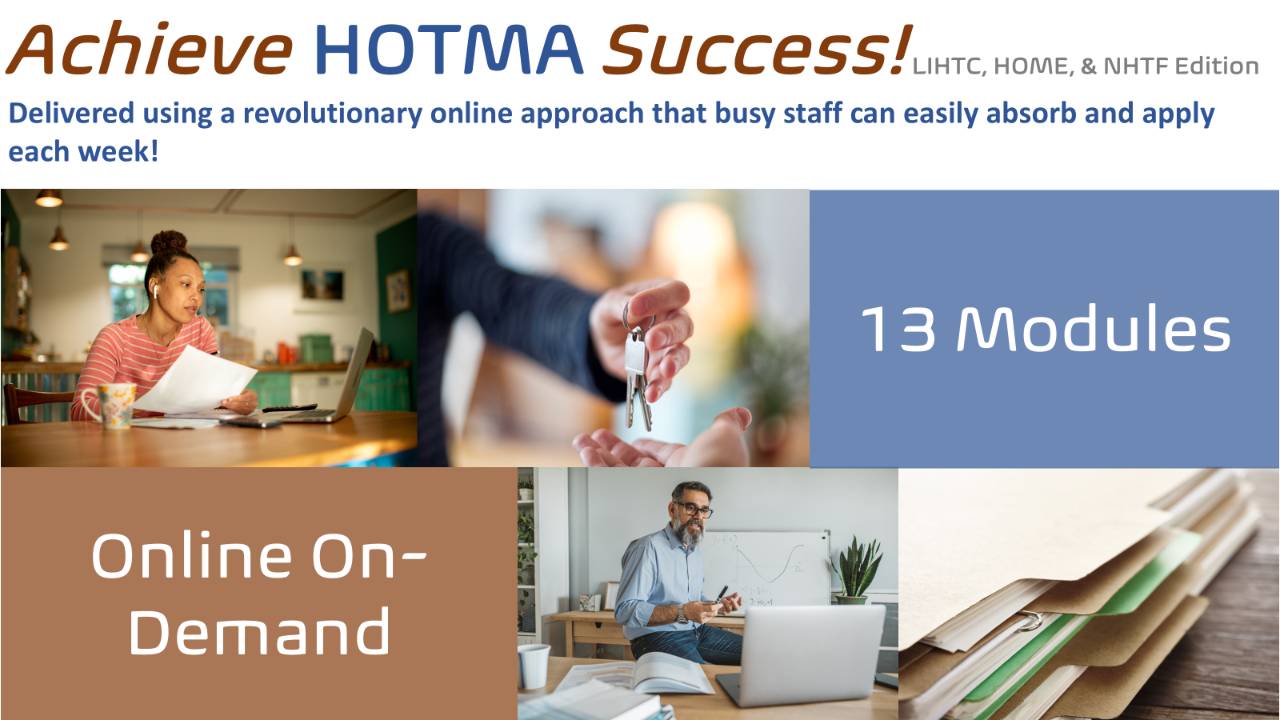Article | Basics 2: Building a Compliance Library - Other Programs
Aug 18, 2021
Tradesmen can attest to the truth of the adage that encourages us to “use the right tool for the right job.” In the first article in this Back to Basics series, we discussed the importance of having a full “toolbox” of regulatory information at our fingertips. This powerfully assists us in effectively managing compliance at tax credit properties. Suggestions were made as to various handbooks and other specific documents to have on hand or on our computers. In this article, we will discuss expanding that “toolbox” to include tools relating to other programs that are often combined with the tax credit to create housing. Understanding guidance on various other rules is the first step in analyzing how other programs interact with tax credit rules and is part of the process of successfully carrying out compliance when combining programs. Although fairly extensive, the list here is not exhaustive. Also, we have provided links to the documents available online. These links are current as of August of 2021, but are subject to change.
HUD
HUD Handbook 4350.3
Reference format: ‘chapter-paragraph/chapter-page’
For HUD Multi-family programs, such as project-based Section 8, the primary source of guidance is the HUD Handbook 4350.3 Occupancy Requirements of Subsidized Multifamily Housing Programs. In the first article of this series, this Handbook was cited as an important guide for the tax credit program because chapter 5 of the 4350.3 explains HUD rules that apply to the tax credit concerning household income and assets. However, if a property also has HUD Multi-family financing, the rest of the Handbook applies as well. As of the writing of this article the most recent revision was Change 4, which was released in 2013.
The HUD Handbook 4350.3 can be found HERE
HUD Notices
Reference format: ‘Notice H (year/#)’
HUD uses these to explain new HUD policies and these Notices often are eventually incorporated into HUD regulation and the HUD Handbook 4350.3, as applicable. Until this happens, Notices provide needed guidance and updates to the most recent Change of the HUD Handbook.
HUD Notices are collected HERE
HUD RHIIP Listserv
Reference format: ‘RHIIP Listserv (Posting #)’
HUD has an initiative to reduce improper subsidy payments called the Rental Housing Integrity Improvement Program (RHIIP). HUD publishes guidance resulting from this initiative through an email Listserv.
HUD’s archive of past postings can be found HERE
Rural Development
HB-2-3560
Reference format: ‘HB-2-3560 (paragraph/page#)’.
Several RD regulations were consolidated into a regulation numbered ‘3560’ in 2005. RD then explained those regulations in three handbooks. Particularly relevant to managers of RD properties is the second handbook, HB-2-3560 Multi-Family Housing Asset Management Handbook.
The HB-2-3560 can be located HERE
Administrative Notices
Reference format: ‘AN #’
These Notices also clarify RD policyANs are internal use documents for issuing temporary clarifications to RD employees. ANs are tied to an instruction and are used to clarify items within that instruction.
AN's can be found HERE
Unnumbered Letters
Reference format: (‘UL (date)’)
Unnumbered letters provide RD guidance that is intended to include in one of the 3560 Handbooks. Although the Letters expire a year after publication, generally they continue to apply until explicitly replaced by a later UL or their guidance is incorporated into an RD Handbook.
ULs can be found HERE
HOME
Regulation 24 CFR Part 92
Reference format: ‘24 CFR Part 92 (section))’
The HOME regulation resides in 24 CFR Part 92. This regulation was most recently overhauled in 2013. Much of the HOME guidance below was issued before the regulation revision. This means that HOME compliance professionals must be aware of the changes when reading the other documents and apply the applicable updates.
The HOME statute, revised regulations and HUD reviews are found HERE
Compliance in HOME Rental Projects Guides
In 2009, HUD produced a 2-Guide series titled Compliance in HOME Rental Projects. There is a guide for Property Owners and one for Participating Jurisdictions. In many ways, these provide the most complete source of HOME compliance guidance, if the 2013 regulation revisions are incorporated into the Guides.
The Owner’s Guide is HERE
The PJ’s Guide is HERE
HOME & the Low-Income Housing Tax Credit Guidebook
At one point, HUD produced a guide HOME & the Low-Income Housing Tax Credit Guidebook. Almost immediately, it became clear that this Guide is inaccurate in many ways concerning how it describes the tax credit. However, HOME provisions described as they interact with the tax credit are somewhat helpful. HUD pulled this document quite quickly and copies only exist to the extent that some professionals retained personal copies.
We have stored a copy HERE
Technical Guide for Determining Income and Allowances for HOME program
The Technical Guide was produced in 2005 and provides guidance on calculations relating to HOME household qualification. Once again, it is very important to use this guide only in conjunction with the 2013 regulation changes.
Along with this guide is an online calculator to assist in determining eligibility by household income for HOME, CDBG and other HUD CPD programs.
The Tech Guide is HERE
The Calculator can be found HERE
TAX-EXEMPT BONDS
Section 142 of the Internal Revenue Code (‘IRC § 142’) is the statute that guides the tax-exempt bond program. As the bond program that is guided by Treasury like the tax credit, see the first article in this series for a reference key to various revenue rulings, procedures, IRS publications, IRS Notices, and other documentation that applies to bond housing as it does to the credit.
Compliance professionals are to be commended when they seek to “use the right tool for the right job.” With the above “right tools” in hand, compliance professionals are prepared to do the hard work of constructing policies to meet the requirements of programs applicable to a property.

There is a very good chance that the topic of this post is covered in an online on-demand course at Costello University.
Stay connected with news and updates!
Join our mailing list to receive the latest news and updates from our team.
Don't worry, your information will not be shared.
We hate SPAM. We will never sell your information, for any reason.






